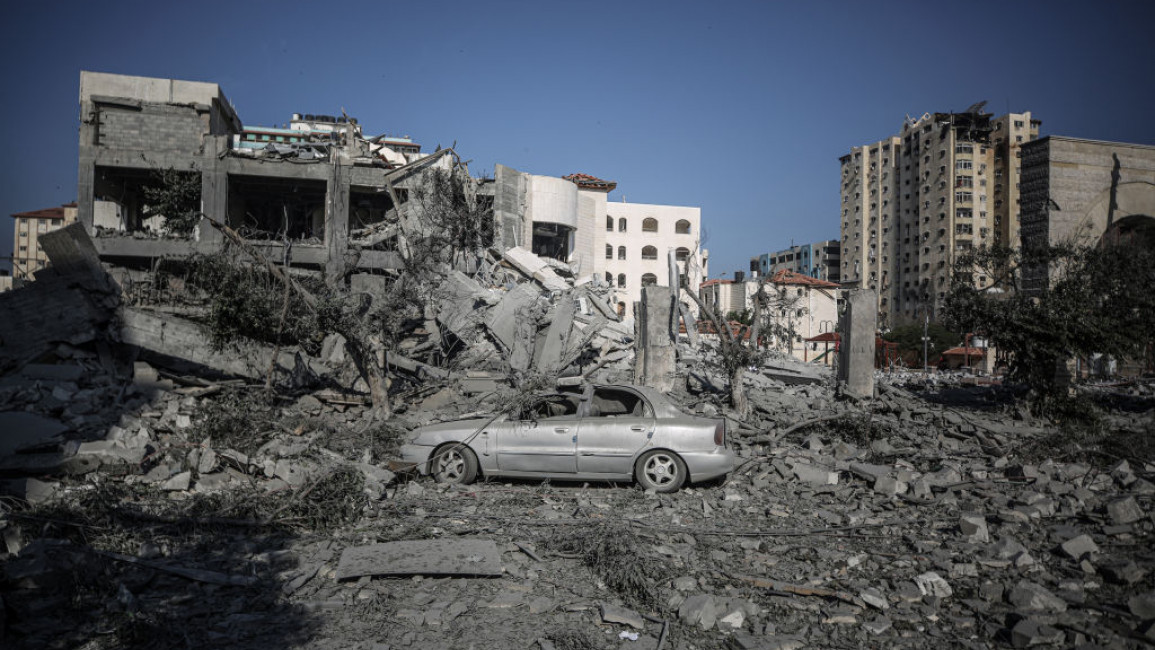
From Tarshiha in 1948 to Gaza in 2023: Israel’s ethnic cleansing continues
This week marks the 75th anniversary of the occupation of my village Tarshiha, along with other Palestinian neighbouring villages in the western Galilee, by Zionist forces. The villages had sustained a valiant resistance that lasted over eight months, to which Zionist forces responded by stepping up their onslaught. They started by taking the major Palestinian cities in Galilee, occupying Haifa and Acre in the west, as well as Tiberias and Safed in the east, which they ethnically cleansed of their inhabitants.
Tarshiha became the last stronghold of the resistance in the Galilee. The inhabitants formed a popular militia to defend the village against the encroaching Zionist forces. My father Kamel, aged 22 at the time, joined the brigade like several hundreds of other young men. He was armed with an English rifle, bought by his mother who had sold the little jewellery she had to afford it. She wasn’t the only one – many other women in the village did the same.
''This year, commemorating the fall of Tarshiha is more painful than ever as we witness an unprecedented and brutal phase of the ethnic cleansing of Palestine.''
With the help of a division from the Arab Salvation Army, which arrived in late May 1948, the brigade succeeded in repelling repeated attacks.
Unable to penetrate the village, the Zionist forces resorted to an aerial bombardment campaign. According to Israeli archival material, two American-made B-17 aircraft bombers carried out the bombing of Tarshiha and nearby villages on 28-29 October. The extensive bombing resulted in the killing and injuring of hundreds, most of whom were women, children, and the elderly – indeed the men were on the outskirts of the village holding the line of defence.
Many were trapped under the rubble of homes they had built with their bare hands.
My family’s house was directly hit by a large bomb that tragically killed eleven members of the family, including my father’s pregnant first wife Su’ad and her two-year-old son Mohammed, my 17aunt Fawziyyeh, my father’s grandmother, her young daughter Huda and her three little children who had fled from Safed after it was occupied. My aunt Fatmeh, who was 18-years-old at the time, was rescued from the rubble but had been paralysed by the blow and spent the rest of her life in a wheelchair.
After the aerial bombing, a ground military invasion by Zionist forces followed. This forced the majority of the village’s residents to flee north towards Lebanon and Syria. Those who fled beyond Palestine became refugees in numerous villages in south Lebanon, and were later moved to UN designated refugee camps. Others were transferred by train from Tire to various parts of Syria including as far north as Aleppo. Many ended up at al-Nairab, an old French army barracks, and their families have remained until today.
Over five hundred other Palestinian towns and villages which were depopulated and destroyed during the Nakba. This was one of the largest operations of ethnic cleansing witnessed since World War II.
My immediate family were lucky and were able to take refuge in a neighbouring village. My grandfather, Mahmoud, was sure that if they left the borders of Palestine, they would never return. So they stayed and shortly after, they were counted in the census by the Israeli military, and were permitted to return to Tarshiha.
At great risk, many crossed the still porous border between Palestine and Lebanon, and returned home. These survivors were given nominal citizenship in the new Jewish State and would spend the next two decades under brutal military rule before it was lifted in 1966 and transferred to the West Bank and Gaza one year later.
In the last two decades, Tarshiha’s residents and their relatives in the diaspora have annually commemorated “Tarshiha’s Day” on the date of the village’s occupation. Not only do they remember its fall to Zionist forces, they also reaffirm their belonging to the Palestinian people and the right of return for their families in exile.
This year, commemorating the fall of Tarshiha is more painful than ever as we witness an unprecedented and brutal phase of the ethnic cleansing of Palestine.
At the time of writing, Israeli regime forces have dropped more than 6,000 bombs on the Gaza Strip. The scale of the destruction and loss of human life is massive. Over 8500 Palestinians have been killed, including over 3400 children, and many more are stuck under the rubble of their homes. Israeli regime forces are bombing hospitals, schools and residential towers with estimates that over 40% of buildings have been damaged or destroyed.
These practices have been classified by the United Nations and international human rights organisations as an unfolding genocide, and a plethora of other war crimes. But we must also understand them as part and parcel of the wider Zionist project that seeks to ethnically cleanse Historic Palestine of its indigenous residents. From the bombing of Tarshiha in 1948 to the large-scale ongoing bombardment of Gaza in 2023, this is the continuation of a process that began many decades ago.
Dr. Mahmoud Hawari is a Palestinian archaeologist from the village of Tarshiha. He is a part-time Professor of Archaeology at Bethlehem University, and a former Director General of the Palestinian Museum, Birzeit.
Have questions or comments? Email us at: editorial-english@newarab.com
Opinions expressed in this article remain those of the author and do not necessarily represent those of The New Arab, its editorial board or staff.



